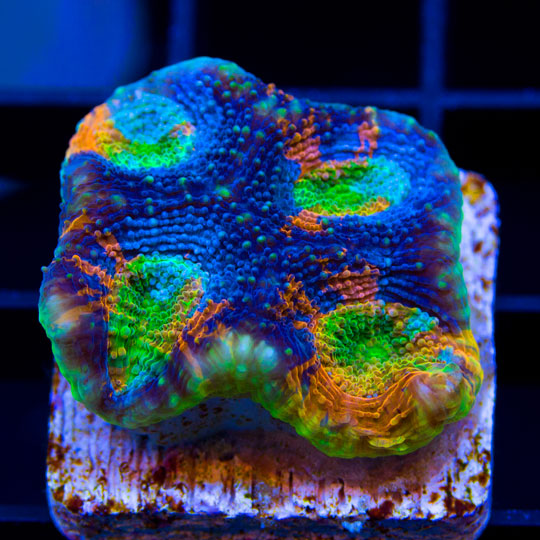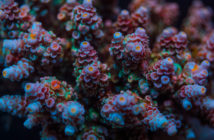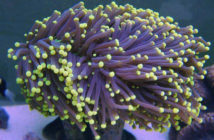
Joe’s Tye Dye Acan
Joey Nichole’s always has beautiful corals for sale at fair prices and this Acan is no exception. Joey calls this beauty his Tye Dye Acan.
Husbandry:
In the reef aquarium, Acanthastrea corals are typically very hardy and fast growing. They are some of the most ideal corals for fragging with a quality frag saw. Like many aquarists, coral farmers and coral importers, Joey uses the Gryphon Aquasaw to cut through the hard skeletons of these corals. These corals will do well in a variety of lighting conditions but it’s best to keep them in lower in the aquarium if your lighting is more intense or you are acclimating them to the aquarium environment for the 1st time.
Acanthastrea Lordhowensis Traits
Acanthastrea generally have large corallites ranging from 8-15 mm. In Australia, Acanthastrea are typically found in shallow lagoons and water depths to about 65 feet (20 meters). In their natural environment these colonies may grow to measure several meters across. And it’s not uncommon that divers when collecting Acan corals with even have to dust off colonies on the reef just to get a better look at their coloration.
Although not as aggressive as acan echinata, acan lordhowensis have the capibility of stinging and digesting other corals in close proximity by extending their mesentery filaments. For this reason you should always pay close attention when placing these corals in the aquarium and continue to monitor them as they grow into colonies.
For faster growth rates, target feed polyps 1 or 2 times per week while the circulation pumps are turned off. Acans will accept meaty foods, zooplankton and pelletized LPS foods when provided by their care giver. You can see the Tye Dye Acan at Joe Know Reefs.





